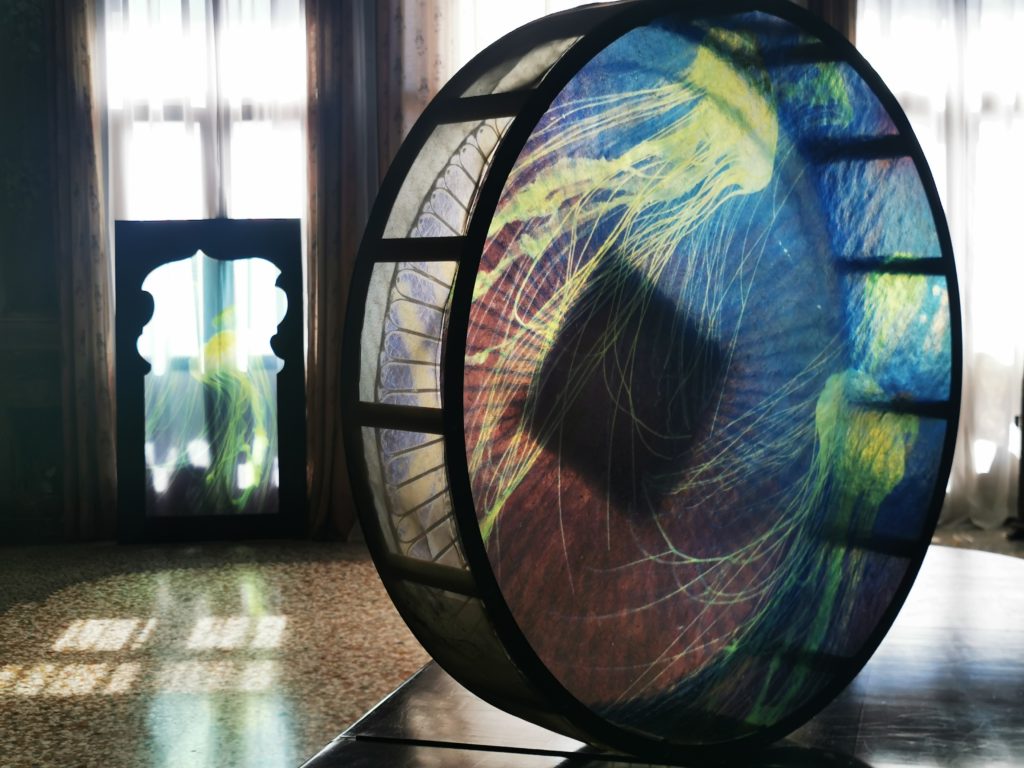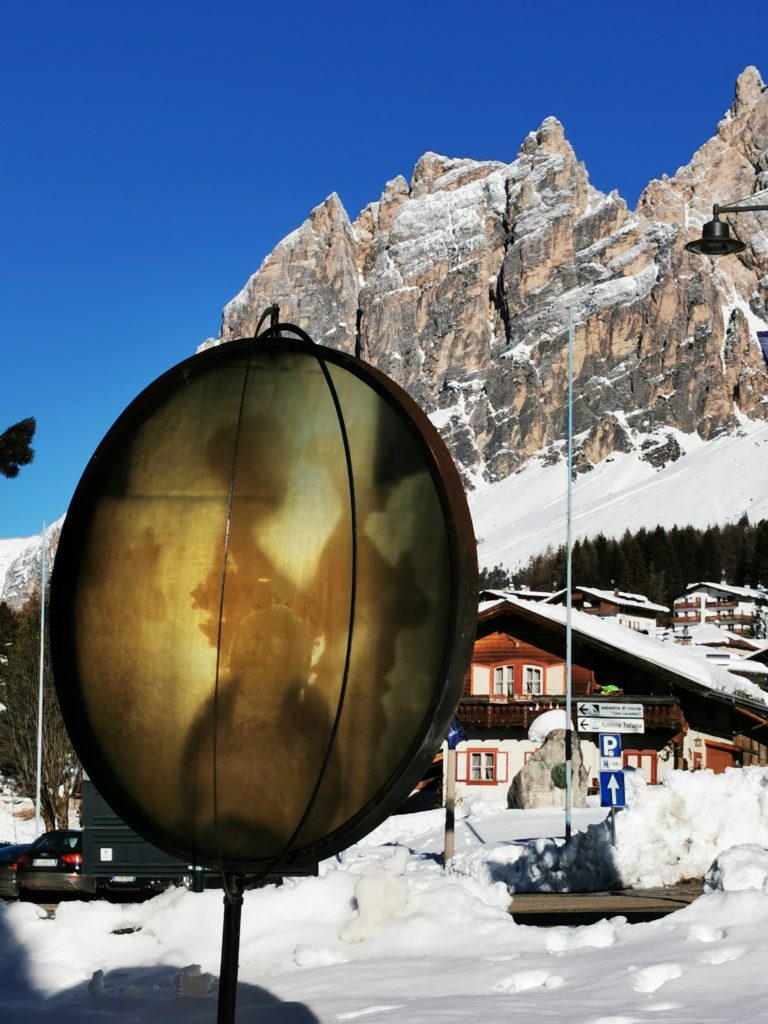
JELLYFISH AND BIGROSE
Rosa Mundi builds an infinite space inside the wooden and iron works, called “SPHERES ARMILLARI”, ” DRUM “and” THE BOX “, superimposing one on the other two plasticized glass plates that represent the beginning and the end of human thought that becomes from verb to image, from story to memory, from symphony to memory, from musical note to story. The images are imprinted by the artist with natural pigments and cold tempera, mixed with a natural material, taken from the membranes of jellyfish. Inside each perfectly self-supporting artistic work, the artist’s thoughts are traced in the languages, defined as dead, of a humanity that preceded us, namely in Aramaic, Persian, Latin and ancient Greek. The intrinsic meaning of the work is contained in the spatial concept of the verb, in the time of the survival of the work and of the owner himself, beyond the human perception of the collector, called to be its custodian and main living interpreter. The physicality of the spatial concept, ie the immateriality of the perception of infinity in “the box” by Rosa Mundi are the essence of the “non-place”. Rosa Mundi with its artistic production aims to continue beyond the boundaries of the material vision of Fontana’s cuts, generating infinite stretch marks of light, between transparency, the imagination and the overlapping of looks.
ARMILLARY BALL SERIES
EQUINOZIAL TREPIDATIONS

SHOW “UNDER ABOVE” | CORTINA
Rosa Mundi builds a particular armillary sphere, consisting of three elliptical iron circles, set one inside the other, formerly circular rings of the ancient fifteenth-century barrels kept in the magical atmosphere of the ancient wine cellars of the Morsasco Castle, in Piedmont on the Via Francigena. Each of the three circles outlines a sphere with its own imaginary ecliptic. The first, starting from the heart of the armillary, is divided into sections corresponding to the twelve signs of the Zodiac. The armillary sphere was intended to show both the precession and the so-called trepidation of the equinoxes, so popular in the 1400s. The original theory of the Greek astronomer Hipparchus, in the second century BC, on the different time taken by the sun to reach the equinox, from spring to spring, recognized a slow movement of the stars, parallel to the ecliptic, in the opposite direction to the diurnal motion such as to give rise to the displacement of the equinoctial points of spring and autumn. This theory was called the precession of the equinoxes. In the following centuries, Arab scientists thought about timing the shift of the equinoxes with a faster advancement from 1 to 66 years, compared to that of Hipparchus, i.e. from 1 to 100 years, until they theorized a change in the speed of precession, as if this was a function of time which had to be determined on the basis of observations. With his installation Rosa Mundi therefore investigates the game of time in astronomical investigation which, as a mathematical variant, must consider the risk of the inevitable succession of the imprecision of human calculation. At the same time, the play of forms, coined and defined by human thought, must be added the further unknown of the obliquity of the ecliptic, which is also variable. The artist creates a historical and emotional link between the present, the past and the future, where memory reigns supreme between the fibers of his works and the viewer’s gaze. Along the internal walls of the works, an inscription in natural fluorescent tempera reveals the secret message of the work of which the collector is called to be the main guardian and ferryman.